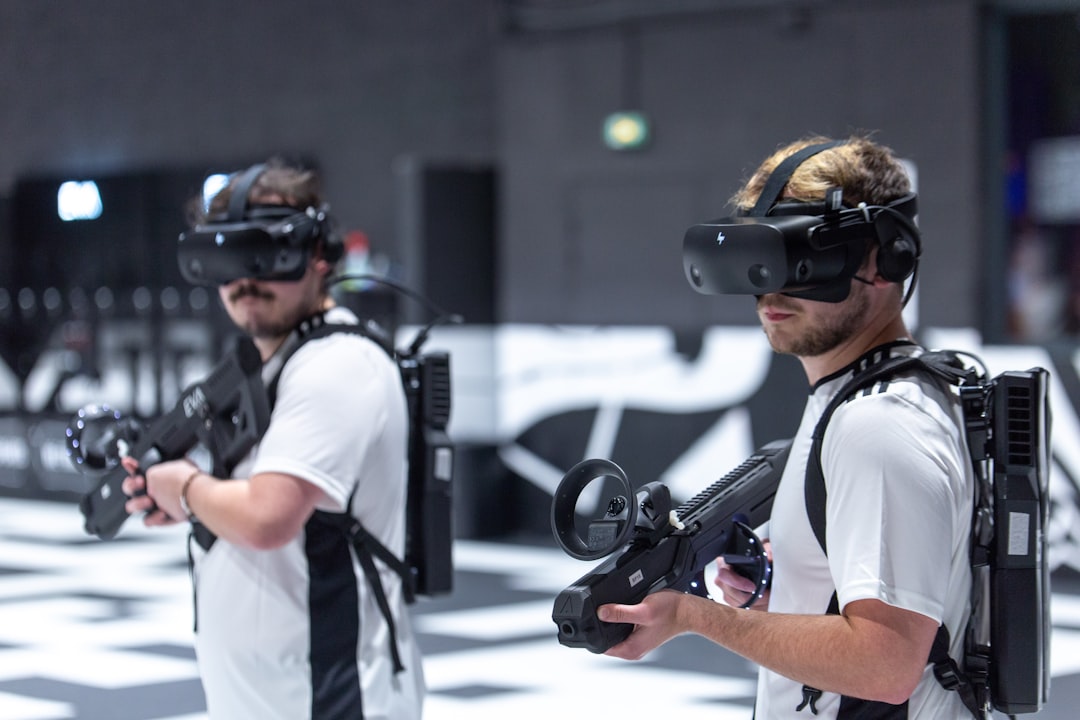The Metaverse is a collective virtual space that merges physical and digital realities, creating an immersive environment where users can interact with each other and digital objects in real-time. This concept extends beyond mere virtual reality (VR) or augmented reality (AR); it encompasses a vast array of interconnected digital experiences, including social interactions, gaming, commerce, and even education. The term gained traction in popular culture through Neal Stephenson’s 1992 science fiction novel “Snow Crash,” where it described a virtual reality-based successor to the internet.
Today, the Metaverse is often envisioned as a 3D internet, where users can navigate through various virtual worlds, engage in activities, and create content.
This continuity allows for a shared experience among users, fostering a sense of community and belonging.
Technologies such as blockchain, VR, AR, and artificial intelligence play crucial roles in shaping the Metaverse. Blockchain enables secure transactions and ownership of digital assets, while VR and AR provide immersive experiences that blur the lines between the physical and digital worlds. As companies invest in building their presence in the Metaverse, it is becoming increasingly clear that this digital frontier will redefine how we interact with technology and each other.
Key Takeaways
- The Metaverse is a collective virtual shared space, created by the convergence of virtually enhanced physical reality and physically persistent virtual reality.
- Amazon is positioning itself to play a significant role in the Metaverse, with investments in virtual reality and augmented reality technologies.
- The Metaverse is expected to revolutionize online shopping, offering immersive and interactive experiences for consumers.
- Virtual shopping experiences in the Metaverse will allow consumers to try on clothes, test out products, and interact with brands in a virtual environment.
- Shopping in the Metaverse offers advantages such as convenience and personalized experiences, but also comes with disadvantages like potential security risks and lack of physical interaction.
Amazon’s Role in the Metaverse
Revolutionizing the Shopping Experience
By integrating elements of the Metaverse into its existing platform, Amazon can create a more interactive shopping experience that goes beyond traditional online retail.
Augmented Reality Initiatives
One of the most notable initiatives by Amazon in this space is its investment in augmented reality technologies. The company has developed AR features that allow customers to visualize products in their own homes before making a purchase. Amazon’s AR View enables users to see how furniture or decor items would look in their living spaces through their smartphones.
Virtual Reality Environments and Beyond
Furthermore, Amazon’s exploration of virtual reality environments could lead to entirely new shopping paradigms, where users can browse virtual malls or attend live events featuring their favorite brands.
The Impact of the Metaverse on Online Shopping

The emergence of the Metaverse is set to revolutionize online shopping by creating more engaging and personalized experiences for consumers. Traditional e-commerce often lacks the interactivity and sensory engagement that physical shopping offers. In contrast, the Metaverse allows for a multi-sensory experience where users can see, hear, and even touch products in a virtual environment.
This shift could lead to higher conversion rates as consumers feel more connected to the products they are considering. Moreover, the Metaverse introduces new opportunities for social shopping experiences. Users can shop together with friends or family members in virtual spaces, sharing opinions and recommendations in real-time.
This social aspect can enhance consumer confidence and satisfaction, as shoppers can rely on their social circles for advice before making purchases. Additionally, brands can host virtual events or product launches within the Metaverse, creating buzz and excitement around new offerings. This level of engagement is difficult to achieve through traditional online shopping platforms, making the Metaverse an attractive avenue for retailers looking to differentiate themselves.
Virtual Shopping Experiences in the Metaverse
| Metrics | Data |
|---|---|
| Number of virtual stores | 1000 |
| Number of users engaging | 1 million |
| Average time spent per session | 30 minutes |
| Percentage of users making purchases | 25% |
Virtual shopping experiences in the Metaverse are designed to mimic or enhance real-world shopping scenarios while incorporating unique digital elements. Retailers can create fully immersive environments where users can explore virtual stores filled with 3D representations of products. For example, a fashion retailer might design a virtual boutique where customers can browse clothing items on digital mannequins or even try them on using avatars that reflect their own body types.
This level of customization not only makes shopping more enjoyable but also empowers consumers to make choices that align with their personal style. In addition to product exploration, virtual shopping experiences can include interactive features such as live demonstrations or tutorials. Brands can host virtual events where influencers or experts showcase products in real-time, allowing consumers to ask questions and receive immediate feedback.
This interactive approach fosters a sense of community and connection between brands and consumers, enhancing brand loyalty. Furthermore, gamification elements can be integrated into these experiences, encouraging users to participate in challenges or earn rewards for their engagement. Such innovative strategies are likely to attract a younger demographic that values entertainment alongside shopping.
Advantages and Disadvantages of Shopping in the Metaverse
Shopping in the Metaverse presents several advantages that could reshape consumer behavior and retail strategies. One significant benefit is the enhanced personalization that virtual environments can offer. Retailers can leverage data analytics to create tailored experiences based on individual preferences and behaviors.
For instance, if a user frequently purchases athletic wear, the Metaverse could present them with personalized recommendations for new arrivals or exclusive offers from their favorite brands. This level of customization not only improves customer satisfaction but also increases the likelihood of repeat purchases. However, there are also disadvantages associated with shopping in the Metaverse that must be considered.
One major concern is accessibility; not all consumers have access to the necessary technology or high-speed internet required to fully engage with virtual environments. This digital divide could exclude certain demographics from participating in these new shopping experiences, potentially widening existing inequalities in access to goods and services. Additionally, there are concerns about data privacy and security within the Metaverse.
As users navigate these digital spaces and share personal information, they may become vulnerable to data breaches or misuse of their information by third parties.
The Future of Online Shopping: Metaverse Trends

The Rise of Virtual Marketplaces
One prominent trend is the rise of virtual marketplaces where multiple brands coexist within a single digital environment. These marketplaces will allow consumers to browse a wide range of products from different retailers without having to navigate multiple websites or apps.
Streamlined Shopping with AI Integration
Another trend is the increasing integration of artificial intelligence (AI) within the Metaverse shopping experience. AI-powered chatbots and virtual assistants can provide personalized recommendations based on user behavior and preferences, guiding consumers through their shopping journey.
Enhanced User Experience and Predictive Analytics
Additionally, AI can analyze vast amounts of data to predict trends and consumer demands, enabling retailers to optimize their inventory and marketing strategies accordingly. As these technologies become more sophisticated, they will play a crucial role in enhancing user experiences within the Metaverse.
Challenges and Opportunities for Retailers in the Metaverse
Retailers venturing into the Metaverse face both challenges and opportunities as they adapt to this new landscape. One significant challenge is the need for substantial investment in technology and infrastructure to create engaging virtual experiences. Developing high-quality 3D environments requires expertise in design and programming, which may be beyond the capabilities of smaller retailers.
Additionally, navigating the complexities of blockchain technology for secure transactions can pose hurdles for businesses unfamiliar with these systems. Despite these challenges, there are numerous opportunities for retailers willing to embrace the Metaverse. The potential for increased customer engagement through immersive experiences can lead to higher sales and brand loyalty.
Retailers can also tap into new revenue streams by selling digital goods or virtual experiences alongside physical products. For example, a cosmetics brand might offer virtual makeup tutorials or exclusive access to limited-edition digital items that enhance a user’s avatar’s appearance. By innovating within this space, retailers can differentiate themselves from competitors and capture the attention of tech-savvy consumers.
How Consumers Can Prepare for the Metaverse Shopping Experience
As the Metaverse becomes an integral part of online shopping, consumers can take proactive steps to prepare for this new experience. First and foremost, familiarizing themselves with emerging technologies such as VR headsets or AR applications will be essential for fully engaging with virtual shopping environments. Understanding how these tools work will enable consumers to navigate digital spaces more effectively and take advantage of interactive features.
Additionally, consumers should be mindful of their digital footprints as they engage with brands in the Metaverse. Being aware of privacy settings and data-sharing practices will help individuals protect their personal information while enjoying immersive shopping experiences. As brands increasingly collect data to personalize offerings, consumers should feel empowered to ask questions about how their information is used and stored.
Amazon’s foray into the metaverse has sparked interest in how other industries are utilizing this virtual space. A related article on metaversum.it explores how the entertainment and media industries are leveraging the metaverse for innovative experiences and content creation. This article delves into the potential impact of the metaverse on these industries and how companies like Amazon are shaping the future of virtual worlds.
FAQs
What is the Amazon Metaverse?
The Amazon Metaverse is a virtual reality platform developed by Amazon that aims to create a shared, immersive digital space where users can interact with each other and with digital environments.
What can users do in the Amazon Metaverse?
Users in the Amazon Metaverse can engage in a variety of activities, including socializing with others, exploring virtual environments, attending events, and participating in virtual commerce.
How does the Amazon Metaverse differ from other virtual reality platforms?
The Amazon Metaverse sets itself apart from other virtual reality platforms by integrating Amazon’s e-commerce capabilities, allowing users to shop for and purchase real-world products within the virtual environment.
What technology is used to power the Amazon Metaverse?
The Amazon Metaverse utilizes virtual reality (VR) and augmented reality (AR) technologies to create immersive and interactive experiences for users.
Is the Amazon Metaverse available to the public?
As of now, the Amazon Metaverse is still in development and has not been publicly released. However, Amazon has announced its plans to launch the platform in the future.

Leave a Reply